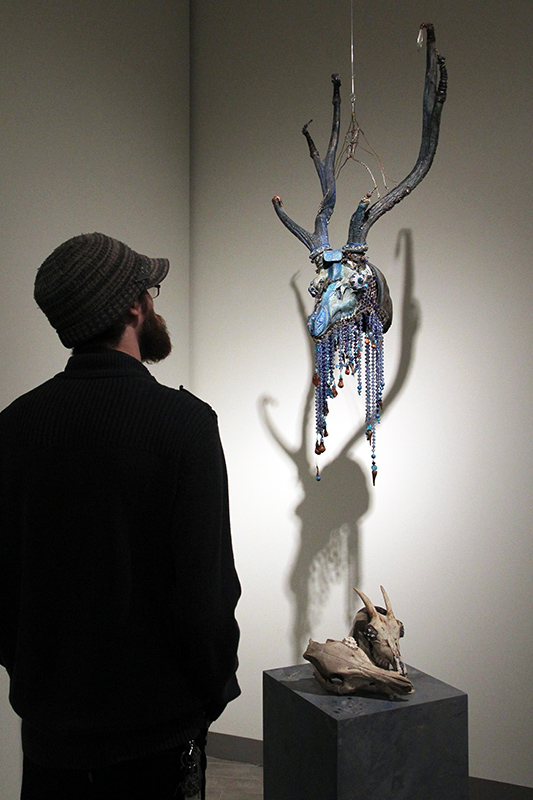- Apply
- Visit
- Request Info
- Give



Published on February 04, 2020
From Jan. 1–March 12, the Art Gallery at Eastern Connecticut State University is presenting “Creating Dangerously: Art & Revolution,” an exhibition that features six Haitian artists — Vladimir Cybil Charlier, Edouard Duval Carrié, Sasha Huber, Pascale Monnin, Nyugen E. Smith and Didier William — who draw on the history of their homeland’s revolt against imperialist oppression to challenge Western culture’s understanding of Haiti and the Caribbean. The exhibition emphasizes the resilience of Haitian people by communicating optimism and commitment to the survival of their unique culture.

The exhibition also features a selection of work by artists from Eastern’s permanent collection of Haitian art, donated by the late Stanley Popiel and his wife Ingrid Feddersen, as well as loans from Trinity College, Pioneer Works in Brooklyn, NY, and private collectors.
Charlier, who lives in Harlem, spoke in the gallery on Jan. 23 prior during a reception in honor of the artists. Her work, which combines her Haitian ancestry and fine arts educ
ation, utilizes paintings, embroidery and collage to reflect gender and cultural stereotypes that have disfigured Haiti, as well as other Caribbean countries. “There is always a sense of history that weighs on us as Haitians — the first Black republic. Today, we artists have our own rules. It is important to create a language through images that reflect our experience. The socio-political legacy is omnipresent and my way of grappling with it is to try to have fun with it in my work.”
Gallery Director Yulia Tikhonova said Eastern’s permanent collection, the artists and the Black Atlantic Slave Trade were among factors that inspired and prompted her to bring “Creating Dangerously” to campus. “I was fascinated by the troubled history of Haiti and its revolution. Haitian artists are heirs to that revolutionary creativity. This region has been considered an antipode to Western society, a black hole of ‘otherness,’ in which the colonialists defined their superiority. These artists take their roots from Haiti’s enduring legacy of revolution and exile, insisting on the self-evident principle that no one should be a slave.”
Tikhonova continued: “The Black Atlantic, shaped and sustained by the violently brutal migration slave trade, also played a key role in a call for freedom. Between 1492 and 1820, millions of African people crossed the Atlantic. Haiti was one of the ports through which the ‘insemination of the Caribbean womb with the blood of Africa’ took place. What can be more dangerous than art steeped in the history of terror of the Middle Passage of the Atlantic slave trade?”
Tikhonova said the work of the visiting artists differs from the more traditional paintings by the Haitian artists in Eastern’s collection, which depict idealized scenes, tropical landscapes, joyous spirits and more refined, peaceful pieces made for tourists. “‘Creating Dangerously’” refutes today’s anti-immigrant frenzy and the white noise of the media,” she said. “The exhibition humbly sends out danger signals to those who are in power. These artists create art that boldly guides us towards a just and more humane future.”
The Art Gallery is open Tuesday and Wednesday 11 a.m.–5 p.m.; Thursday 1–7 p.m.; and Saturday and Sunday 2–5 p.m. Admission is free and open to the public. For more information, contact the Art Gallery at 860-465-4659 or visit the website at https://www.easternct.edu/art-gallery/.
Written by Dwight Bachman